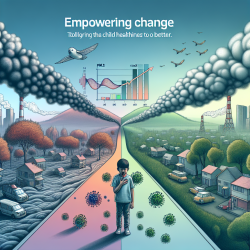Unveiling the Impact of International Drug Conventions on Public Health
In the realm of public health, the regulation of psychoactive substances such as alcohol, tobacco, and cannabis has been a topic of significant debate. The research article "How well do international drug conventions protect public health?" by Mark Haden and Brian Emerson offers a comprehensive analysis of regulatory strategies that could enhance public health outcomes. Drawing lessons from alcohol and tobacco control, the authors propose a public health-oriented model for cannabis regulation. This blog explores the key insights from the research and provides actionable strategies for practitioners to improve their skills in implementing these outcomes.
Lessons from Alcohol and Tobacco Control
The research underscores the importance of evidence-based regulatory strategies derived from international documents like "Alcohol: No Ordinary Commodity" and the WHO Framework Convention on Tobacco Control (FCTC). These strategies include:
- Government monopoly on retail sales to limit consumption and harm.
- Taxation and pricing policies to influence consumption patterns.
- Restrictions on marketing, advertising, and sponsorship to reduce demand.
These strategies have been effective in controlling alcohol and tobacco use, and similar approaches can be adapted for cannabis regulation.
Proposed Regulatory Model for Cannabis
The proposed model for cannabis regulation emphasizes a public health approach, focusing on availability, accessibility, supply, purchase, consumption, and use. Key components include:
- Government Control: Establishing a government monopoly on cannabis retail sales to reduce the profit motive and limit the influence of special interests.
- Pricing and Taxation: Implementing pricing strategies that compete with the illegal market while ensuring affordability for therapeutic use.
- Purchase Age and Rationing: Setting a minimum purchase age and limiting purchase quantities to prevent diversion to minors.
- Consumption Locations: Restricting cannabis use to licensed locations or private homes to mitigate public health risks.
- Supply Management: Controlling cannabis production and distribution through a centralized commission to ensure quality and safety.
- Promotion and Packaging: Prohibiting branding and requiring plain packaging with health warnings to reduce consumption.
Encouraging Further Research and Implementation
Practitioners are encouraged to delve deeper into the research and consider how these strategies can be adapted to their local contexts. By understanding the nuances of international drug conventions and their impact on public health, practitioners can advocate for policies that prioritize health outcomes over commercial interests.
To read the original research paper, please follow this link: How well do international drug conventions protect public health?










